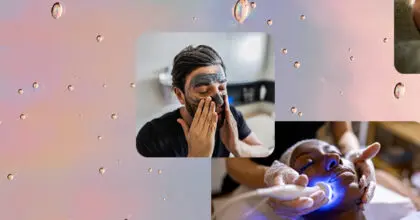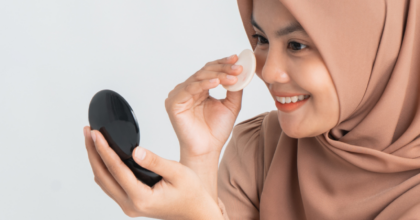Smooth operator: Hair removal among young British males is on the rise
Not so long ago, it was all about the ‘au naturel’ look for men and then came Love Island, which saw the likes of Wes Nelson, Jack Fincham and Adam Collard boasting hair-free bodies. And today, new research from Mintel on shaving and hair removal reveals that more and more of Britain’s young men are embracing this trend, in search of a baby-smooth torso.
Over the last two years, the popularity of body hair removal has shot up among the nation’s men; in 2018, as many as 46% of all men removed hair from their bodies, up from just over a third (36%) in 2016.
In fact, it seems that no place on young men’s bodies is considered too private, as they shave, wax and laser their way to the smoothest of looks. Indeed, today, a plucky 57% of young males aged 16-24 say they have removed hair from their pubic region, compared to 40% in 2016. Meanwhile, 42% of males aged 16-24 remove hair from their underarms, up from 16% in 2016. Hair removal from the chest has risen from 15% in 2016, doubling to 30% in 2018; while hair removal from the back has increased from 10% in 2016 to 12% in 2018.
Mintel research reveals that young men aged 16-24 are removing body hair almost as much as young women of the same age, with similar proportions of both (29% of men versus 34% of women) removing hair more frequently in the last 12 months*. The top three hair removal areas for women aged 16-24 are underarms (90%), legs (90%) and the pubic region (75%).
While almost half (45%) of adults agree that it is unfair that women’s bodies are expected to be hair-free, around one in five (19%) adults agree that men should remove hair from their bodies.
Roshida Khanom, Associate Director, Beauty & Personal Care at Mintel, said:
“Consumers today are feeling the pressure to be hair-free. However, whilst the pressure on women remains higher, we’re seeing more and more young men in particular feeling the need to be hair-free too. Reality TV shows such as Love Island have popularised hairless torsos, normalising the hair-free aesthetic amongst men. This year has also seen new product development in the male body hair removal category, notably NIVEA’s Men’s Body Hair Removal range, as well as launches from Veet and Nad’s targeting men.”
Over 65s trim up their face
It’s not just the body that is receiving the hair-free treatment, as facial hair removal among Brits has risen from 73% in 2016 to 80% in 2018. Raising eyebrows, the number of Brits removing hair from their eyebrows has risen from 33% in 2016 to over four in ten (42%) in 2018. Meanwhile, the number of Brits removing hair from their nose has risen from 11% in 2016 to 20% in 2018.
While older men have traditionally been less concerned with hair removal (just 12% of men aged over 65 removed hair from their nose in 2016), modern times have seen a shift. In 2018, 31% of men aged over 65 removed hair from their nose, with 32% removing hair from their eyebrows and 34% removing hair from their ears.
But despite increased grooming around the face, the beloved beard trend shows no evidence of waning. 44% of men have some stubble, 20% a closely trimmed beard and 7% a thick/full beard. The majority (76%) of adults agree that beards should be well groomed.
“Whilst young men are leading the trend of body hair removal, older men are driving facial hair removal, highlighting that older men are also feeling the pressure to keep up with appearances. Brands can do more to engage with this demographic, whether it is by designing products for their unique hair removal needs or including them in advertising and marketing material.” Adds Roshida.
Sales of shaving and hair removal thin out
Finally, while Brits are reaching for their blades, Mintel research reveals a decline in the value of the shaving and hair removal products sector. Sales of shaving and hair removal products declined 4% in 2018 to reach £558 million, from £579 million in 2017.
“As both genders feel the pressure to be hair-free, facial and body hair removal rates have seen a rise; however, the category continues to show a decline in value, with little activity in product innovation encouraging consumers to trade up. The beard trend shows no evidence of waning in 2018, with the razors and blades segment reflecting the impact; whilst savvy shopping behaviours, discounting and the rise in low-cost subscription services have resulted in a more scrupulous shopper.” Concludes Roshida.
*June 2016 to June 2018
-
 Discover your next big breakthroughGet smart fast with our exclusive market research reports, delivering the latest data, innovation, trends and strategic recommendations....View Reports
Discover your next big breakthroughGet smart fast with our exclusive market research reports, delivering the latest data, innovation, trends and strategic recommendations....View Reports -
 2026 Global PredictionsOur Predictions go beyond traditional trend analysis. Download to get the predictive intelligence and strategic framework to shape the future of your industry in 2026 and beyond. ...Download now
2026 Global PredictionsOur Predictions go beyond traditional trend analysis. Download to get the predictive intelligence and strategic framework to shape the future of your industry in 2026 and beyond. ...Download now -
Are you after more tailored solutions to help drive Consumer Demand, Market Expansion or Innovation Strategy?Ask for a customised strategic solution from Mintel Consulting today....Find out more






























